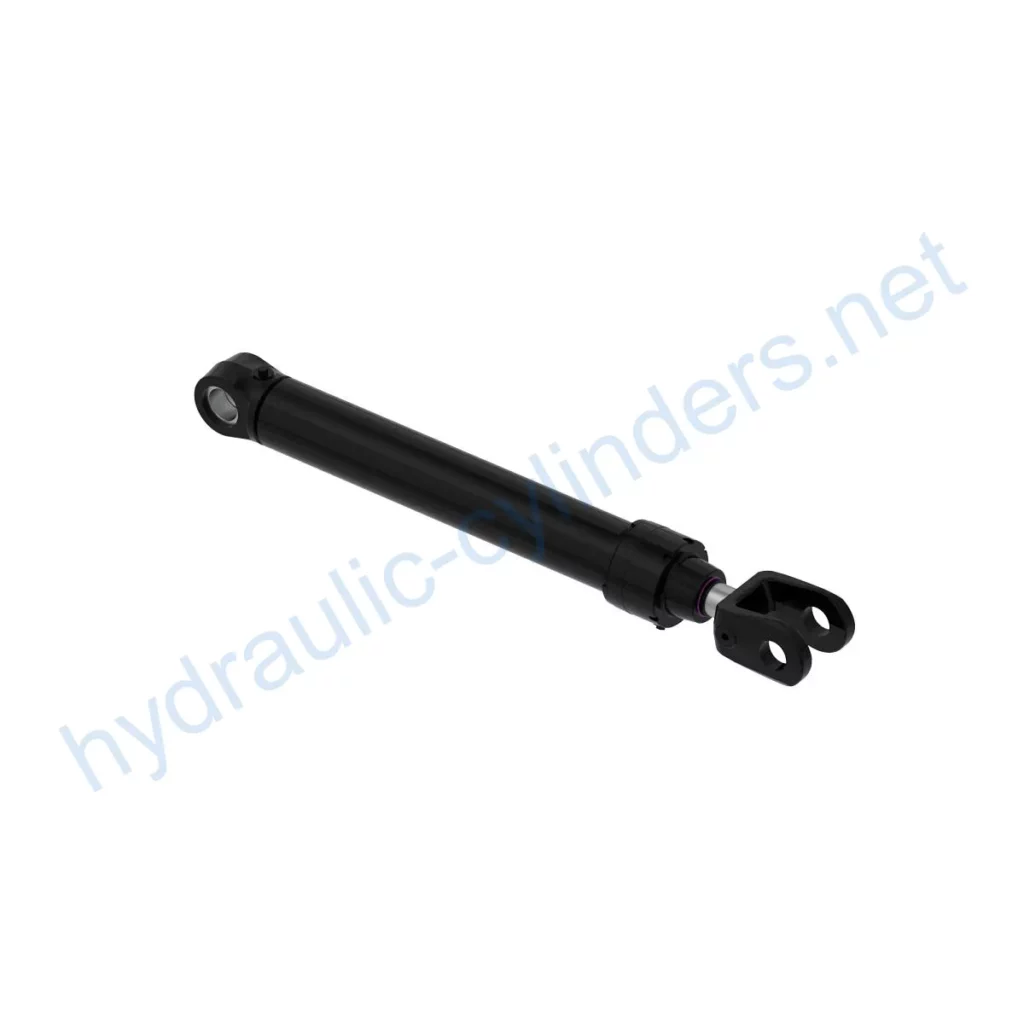Replacement Of AHC17333 Hydraulic Cylinder
Introduction:
The Replacement Of AHC17333 Hydraulic Cylinder is a crucial component used in various industrial applications. This hydraulic cylinder serves a vital function in machinery operations, providing the necessary force for linear motion and control. It plays a crucial role in ensuring the smooth and efficient operation of equipment.
Specifications:
- Weight: 193.19 lb
- Height: 7.1 in
- Width: 8 in
- Length: 55.7 in
Model: 524 P 524L
Features:
- Improved Equipment Performance: Replacing damaged or worn hydraulic cylinders can restore the equipment’s normal operational capabilities, ensuring optimum performance in various applications.
- Enhanced Safety: Regularly replacing hydraulic cylinders reduces safety risks associated with cylinder failures, ensuring the safety of both operators and equipment.
- Overload Protection: New cylinder designs often incorporate better overload protection mechanisms, enhancing safety during operation.
- Quick Installation: Modern hydraulic cylinders are designed for easy installation and replacement, minimizing downtime.
- Standardized Components: Many hydraulic cylinders are standardized, making it easier to obtain replacement parts in the market.
We specialize in producing hydraulic cylinders that can perfectly replace various models, including the AHC17333 hydraulic cylinder. Our products are designed to meet the highest standards and ensure seamless compatibility.
Applications:
- Excavators: The hydraulic cylinder in excavator arms or buckets may get damaged due to prolonged use or overload, requiring replacement to restore normal operation.
- Cranes: Cranes often experience wear on their boom hydraulic cylinders during frequent lifting and lowering processes, necessitating regular replacements for safety assurance.
- Tractors: The front loader hydraulic cylinder in tractors may develop leaks or decreased performance during constant lifting and tilting operations, demanding replacement.
- Harvesters: In the harvesting process, hydraulic systems endure high pressure, leading to cylinder fatigue. Timely replacement is crucial in maintaining operational efficiency.
- Automated Production Lines: Hydraulic cylinders are used to control robotic arms and other automated equipment. Cylinder failures can significantly impact production efficiency, requiring immediate replacement.
- Die-casting Machines: In high-pressure and high-temperature environments, hydraulic cylinders may experience performance degradation. Regular replacement ensures product quality.
- Mining Equipment: Hydraulic cylinders are used for lifting and moving heavy loads in mining equipment. Due to the harsh working conditions, regular inspection and replacement are necessary to avoid equipment failures.
- Bulldozers: Wear on hydraulic cylinders in bulldozer blades can lead to decreased pushing capacity, necessitating timely replacement to maintain operational efficiency.
Maintenance Tasks:
- Regular Inspection: Perform routine checks to identify any signs of wear, leaks, or damage in the hydraulic cylinder.
- Proper Lubrication: Adequate lubrication helps maintain smooth operation and prolong the lifespan of the hydraulic cylinder. Follow the recommended lubrication schedule.
- Seal Replacement and Calibration Checks: Replace worn seals and regularly calibrate the hydraulic cylinder to ensure optimal performance and prevent leakage.
It is essential to emphasize the importance of correct installation, lubrication, and adjustment. Provide guidance on aligning the cylinder correctly during the installation process, recommend using appropriate installation brackets to secure the cylinder, and suggest inspection, repair, and replacement procedures. Additionally, offer replacement parts and rebuilding services to enhance the longevity of the hydraulic cylinder.
Safety Considerations and Environmental Factors:
When using hydraulic cylinders, safety measures are of utmost importance. Proper handling, adherence to safety protocols, and the use of appropriate protective equipment are critical to prevent accidents and injuries. Additionally, considering environmental factors, such as using environmentally friendly hydraulic fluids, helps minimize the impact on the ecosystem.
Troubleshooting and Common Issues:
- Leakage: If the hydraulic cylinder shows signs of leakage, check the seals and connections for any damage or misalignment and replace as necessary.
- Slow Operation: Insufficient lubrication or a malfunctioning control valve can cause slow operation. Ensure proper lubrication and check the control valve for any issues.
- Excessive Noise: Excessive noise during operation may indicate a problem with the hydraulic cylinder’s internal components. Inspect and repair or replace faulty parts accordingly.
Providing troubleshooting tips and solutions will help readers effectively diagnose and resolve issues. Additionally, suggesting preventive measures can reduce potential problems and ensure the smooth functioning of the hydraulic cylinder.
Design Considerations and Selection Criteria:
When selecting a hydraulic cylinder, various design considerations should be taken into account, including load capacity, sealing effectiveness, durability, safety features, and ease of maintenance. Each aspect plays a vital role in ensuring optimal performance and longevity.
Sealing and Lubrication:
The hydraulic cylinder incorporates various seals, such as piston seals and rod seals, made from wear-resistant materials like polyurethane and nitrile rubber. The cylinder body and threaded ends undergo precise surface treatments to enhance wear resistance. Regular lubrication with the appropriate hydraulic oil is necessary to ensure smooth operation and prevent premature wear.
Regular inspection and preventive maintenance measures are crucial to ensure the longevity of the hydraulic cylinder.
Correct Installation Guidelines:
Proper installation is essential for the hydraulic cylinder’s optimal performance and longevity. Follow these guidelines:
- Align the cylinder correctly during installation.
- Use appropriate installation brackets to securely fasten the cylinder.
- Follow recommended inspection, repair, and replacement procedures.
- Offer replacement parts and rebuilding services to improve the hydraulic cylinder’s lifespan.
Safety Considerations and Environmental Factors:
When handling hydraulic cylinders, safety precautions must be taken to prevent accidents and injuries. Additionally, taking into account environmental factors, such as using biodegradable hydraulic fluids, contributes to environmental sustainability.
Troubleshooting and Common Issues:
- Leakage: Check seals and connections for damage, misalignment, or improper installation. Replace faulty components as necessary.
- Slow Operation: Ensure proper lubrication and check the control valve for malfunctions or restrictions.
- Noise: Excessive noise during operation may indicate internal component issues. Inspect and replace faulty parts accordingly.
Providing troubleshooting tips and solutions helps readers effectively diagnose and resolve problems. Additionally, offering preventive measures can minimize potential issues and ensure optimal performance of the hydraulic cylinder.
Finally, let us introduce our company:

